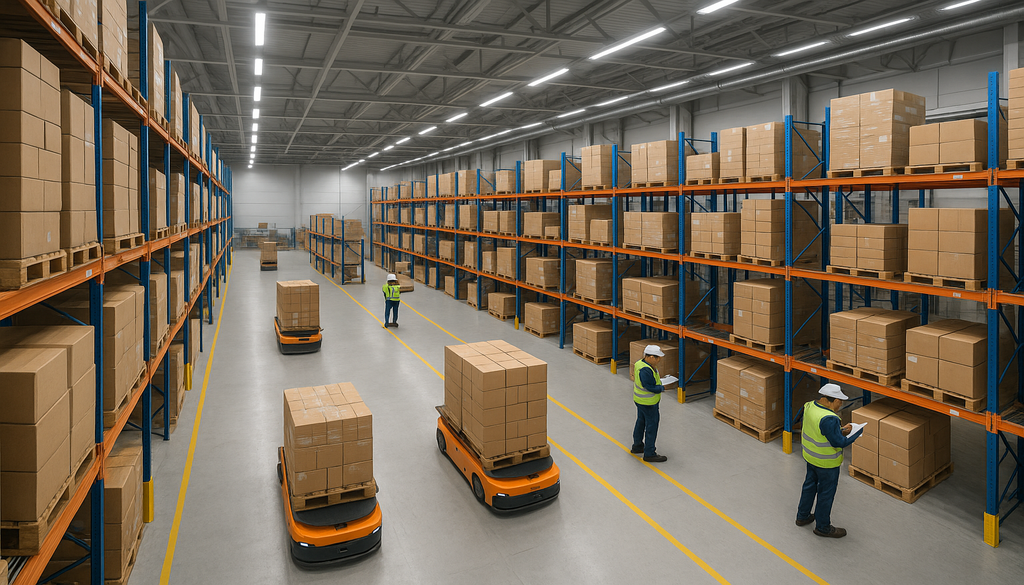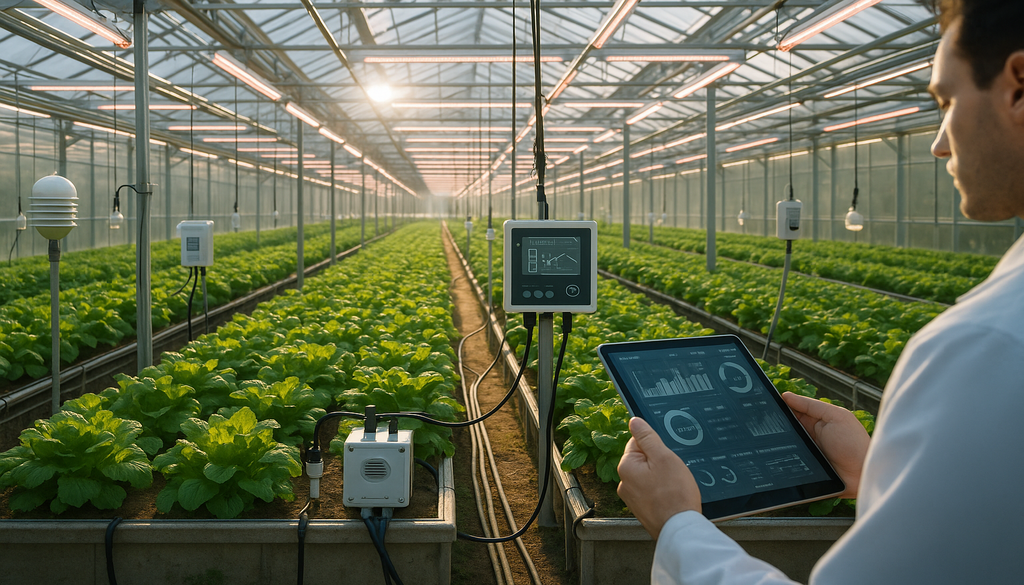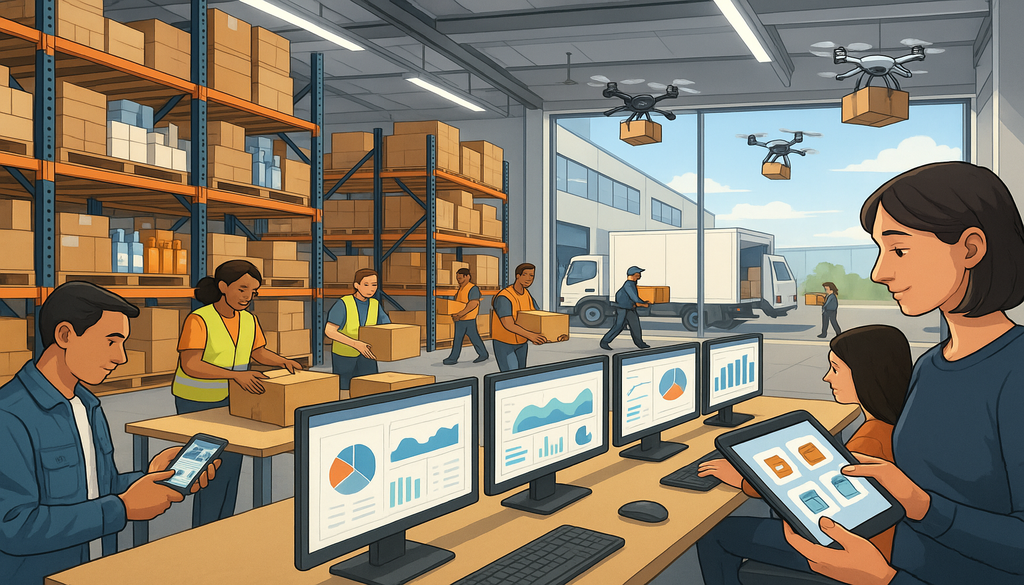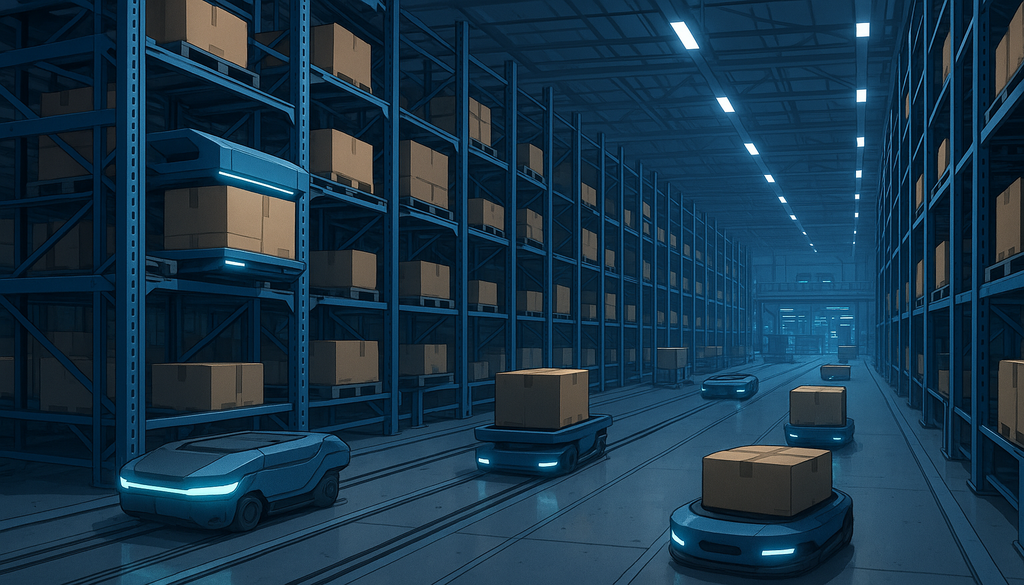
Understanding Upstream Warehouse Automation
Upstream warehouse automation refers to the implementation of advanced technologies and systems that optimize operations at the early stages of the supply chain—specifically within distribution centers and warehouses before products reach the last mile delivery phase. These automated systems encompass a range of technologies designed to enhance inventory management, order processing, and material handling with minimal human intervention. The scope extends from receiving and putaway operations to picking, packing, and shipping preparation, essentially covering all warehouse activities that occur before goods leave the facility for final delivery.
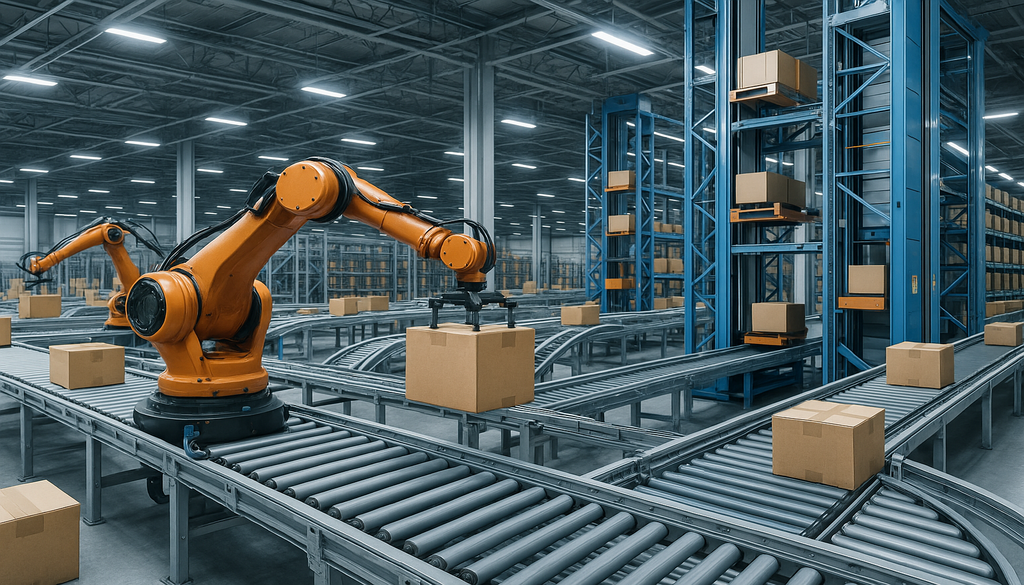
In the modern supply chain ecosystem, upstream automation serves as the foundation upon which efficient last mile delivery is built. By streamlining operations at the warehouse level, companies create a ripple effect of efficiency that extends throughout the entire logistics network. Warehouse automation technologies address critical operational challenges such as labor shortages, increasing order volumes, and the growing complexity of inventory management. These systems provide the necessary infrastructure to handle the increasing demands of e-commerce and omnichannel fulfillment, which require faster processing times and greater accuracy than traditional retail distribution models.
The strategic importance of upstream warehouse automation cannot be overstated in today’s competitive business environment. With consumer expectations for rapid delivery continuing to rise, companies must optimize their warehouse operations to meet these demands without sacrificing accuracy or increasing costs significantly. Automation provides the means to achieve these seemingly contradictory goals by removing bottlenecks in the fulfillment process. Through automated systems, warehouses can maintain consistent performance levels even during peak periods, creating a stable foundation for last mile logistics operations that rely on predictable inventory availability and processing times.
Implementing upstream warehouse automation also contributes significantly to data-driven decision-making in supply chain management. Automated systems generate vast amounts of operational data that can be analyzed to identify inefficiencies, predict future trends, and make informed strategic decisions. This level of visibility into warehouse operations allows companies to continuously refine their processes and adapt to changing market conditions. The data captured through automation creates a feedback loop that informs improvements not only within the warehouse but across the entire supply chain, including last mile delivery operations.
The Impact of Automation on Last Mile Logistics
Warehouse automation creates a profound impact on last mile delivery performance by establishing a foundation of accuracy and timeliness that reverberates throughout the delivery process. When orders are picked, packed, and prepared for shipment with automated precision, the likelihood of errors reaching the final delivery stage diminishes significantly. This accuracy translates directly into reduced returns, fewer customer complaints, and higher overall satisfaction—metrics that directly affect the bottom line for logistics providers and retailers alike. Furthermore, automation enables warehouses to process orders more quickly, extending cut-off times for same-day or next-day delivery options and providing last mile carriers with more flexibility in route planning and execution.
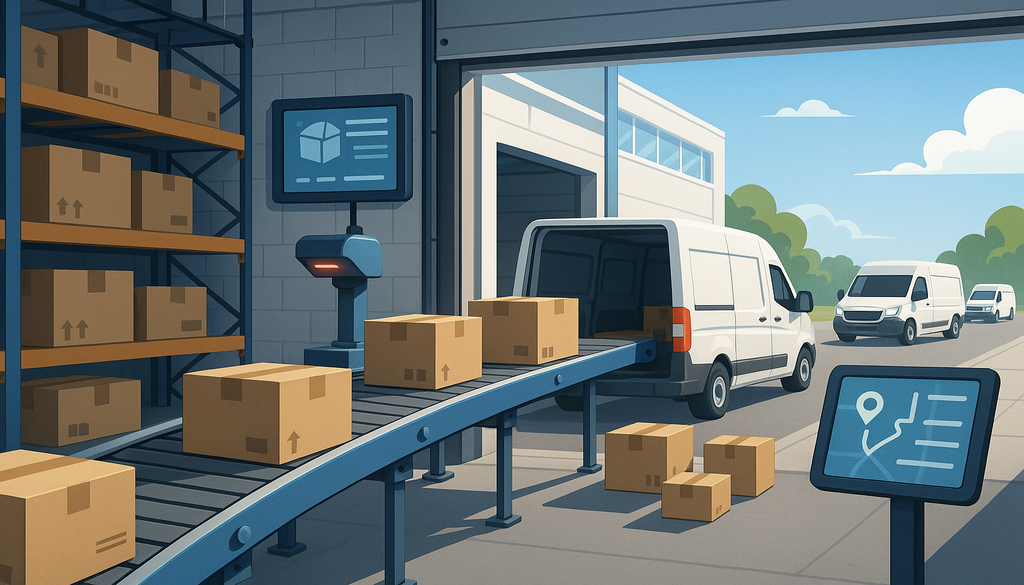
The synchronization between automated warehouse systems and last mile delivery operations represents one of the most compelling benefits of upstream automation. When warehouse management systems (WMS) integrate seamlessly with transportation management systems (TMS), real-time inventory visibility becomes possible, allowing for dynamic allocation of products to delivery routes. This integration enables more efficient load building, with packages grouped optimally for specific delivery routes or zones. For example, when Amazon implemented automated sorting systems in their fulfillment centers, they reported a 20% reduction in last mile delivery times and a 15% increase in driver productivity, primarily because packages were pre-sorted in a manner that aligned perfectly with delivery routes.
The predictability that automation brings to warehouse operations has transformed how last mile logistics providers schedule their resources. With consistent order processing times established through automation, delivery companies can plan driver schedules, vehicle utilization, and fuel consumption with greater precision. This predictability eliminates the feast-or-famine cycle that often plagues last mile operations, where drivers might be overwhelmed with deliveries one day and underutilized the next. Companies like UPS have leveraged this predictability to implement dynamic dispatch systems that adjust to warehouse output in real-time, resulting in an 8% reduction in overall delivery costs and improved service level agreement (SLA) compliance.
Supply chain resilience has emerged as another critical benefit of the warehouse automation-last mile connection. When unexpected disruptions occur, such as weather events or sudden demand spikes, automated warehouses can adapt more quickly to changing priorities. During the COVID-19 pandemic, retailers with highly automated warehouses demonstrated this resilience by rapidly shifting inventory allocation between e-commerce and store replenishment channels. Target Corporation, which had invested heavily in warehouse automation prior to 2020, was able to scale its curbside pickup service by 700% during the pandemic’s early months, largely because their automated systems could quickly reprioritize picking sequences and inventory allocation to support this last mile delivery option.
Key Technologies Driving Upstream Warehouse Automation
Automated storage and retrieval systems (AS/RS) represent the backbone of modern warehouse automation, fundamentally transforming how inventory is stored, accessed, and managed. These sophisticated systems utilize robotic shuttles, cranes, and vertical lift modules to maximize storage density while minimizing the time required to retrieve items. By implementing AS/RS technology, warehouses can achieve storage densities up to 85% higher than traditional racking systems while reducing picking errors by up to 99%. This increased storage efficiency translates directly to last mile logistics benefits by enabling warehouses to maintain broader inventory assortments closer to urban delivery zones, reducing transportation distances and delivery timeframes.
Autonomous mobile robots (AMRs) and collaborative robots (cobots) have revolutionized the movement of goods within warehouse environments, creating dynamic workflows that adapt to real-time conditions. Unlike traditional conveyor systems that follow fixed paths, AMRs navigate independently using sophisticated sensors and artificial intelligence, bringing goods to pickers or moving inventory between warehouse zones. Companies implementing AMRs report productivity improvements of 200-300% in picking operations, directly impacting last mile delivery preparation. For instance, when DHL implemented AMRs across multiple fulfillment centers, they recorded a 25% increase in overall productivity and reduced order processing times by nearly 30%, allowing packages to reach the last mile delivery stage significantly faster.
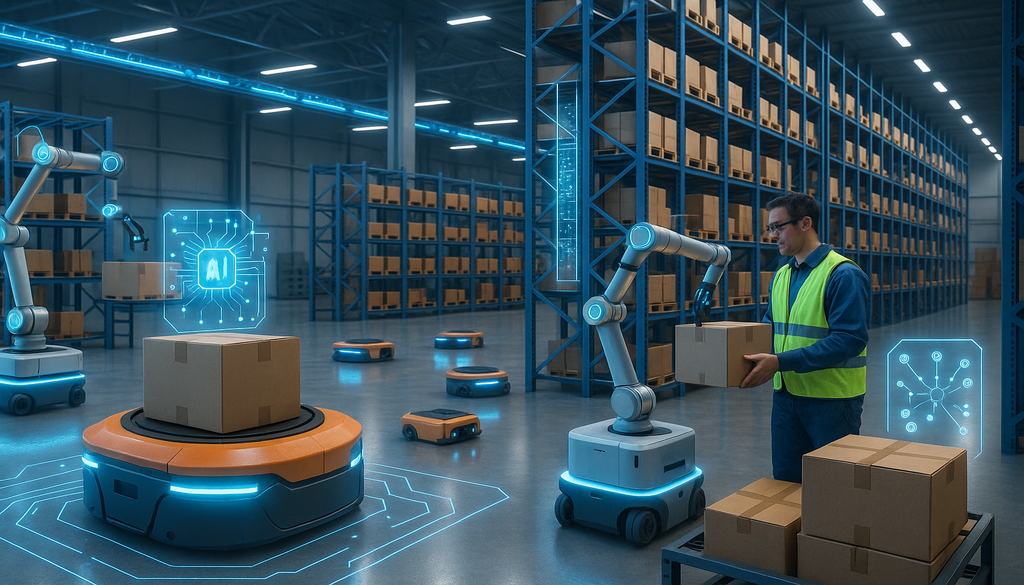
Artificial intelligence and machine learning systems serve as the neural network of advanced warehouse automation, optimizing everything from demand forecasting to slotting optimization and route planning. These technologies analyze vast datasets to identify patterns and make predictions that human operators simply couldn’t process. AI-powered inventory management systems can predict product demand with up to 30% greater accuracy than traditional forecasting methods, ensuring that the right products are available when needed. This predictive capability directly impacts last mile logistics by reducing out-of-stock situations and unnecessary expedited shipping costs. Additionally, AI systems can optimize pick paths within warehouses, reducing the distance traveled by workers or robots by up to 40% and further accelerating order preparation for last mile delivery.
Internet of Things (IoT) technology creates unprecedented visibility into warehouse operations through networks of connected sensors and devices. These systems monitor everything from environmental conditions to asset utilization and worker productivity in real-time. IoT implementations typically generate 25-30% improvements in warehouse utilization and can reduce operational costs by 10-15% through predictive maintenance and resource optimization. For last mile logistics, this connectivity extends the supply chain visibility all the way to the customer’s doorstep. When connected pallets, packages, and vehicles share location and condition data throughout the delivery journey, last mile providers can offer precise delivery windows and proactive communication. Companies like FedEx have leveraged IoT technology to create SenseAware tracking systems that monitor package location, temperature, light exposure, and humidity from warehouse to final delivery, ensuring product integrity throughout the logistics process.
Challenges and Solutions in Implementing Upstream Automation
The significant capital investment required for warehouse automation represents one of the most formidable barriers to implementation, particularly for small and medium-sized enterprises. With comprehensive automation solutions often costing millions of dollars, companies must carefully evaluate the return on investment (ROI) and cash flow implications of these projects. However, innovative financing models have emerged to address this challenge. Equipment leasing, automation-as-a-service (AaaS), and phased implementation approaches allow companies to distribute costs over time while beginning to realize efficiency benefits. For example, third-party logistics provider Kenco developed a “test before you invest” program that allows clients to pilot automation technologies in controlled environments before committing to full-scale implementation, reducing financial risk while providing proof of concept for the impact on last mile delivery metrics.
Integration complexities between existing warehouse management systems and new automation technologies often present technical hurdles that can derail implementation projects. These integration challenges become particularly acute when companies operate legacy systems or have developed custom software over decades of operation. Successful organizations address this challenge by adopting middleware solutions and application programming interfaces (APIs) that facilitate communication between disparate systems. Companies like Locus Robotics have developed platform-agnostic robotics systems that can integrate with virtually any existing WMS, allowing for incremental automation without requiring wholesale system replacements. This integration flexibility ensures that downstream processes, including last mile delivery preparation, continue uninterrupted during automation implementation.
Workforce adaptation and change management represent the human dimension of automation challenges, often determining whether implementation succeeds or fails. Employees may resist automation due to fear of job loss or unfamiliarity with new technologies, creating operational friction that undermines efficiency gains. Forward-thinking organizations address this challenge through comprehensive training programs, clear communication about how automation will change (not eliminate) roles, and involving frontline workers in the implementation process. Walmart’s successful implementation of automated inventory systems included creating “automation champions” from existing staff who helped train colleagues and provide feedback to technology vendors, resulting in higher adoption rates and smoother transitions that ultimately benefited last mile delivery performance.
Physical infrastructure limitations often constrain automation options, particularly in older facilities designed for manual operations. Low ceilings, uneven floors, and insufficient electrical capacity can restrict the types of automation technologies that can be implemented effectively. Companies address these constraints through creative adaptation of existing spaces or strategic facility redesign. For instance, when The Home Depot faced space constraints in urban distribution centers, they implemented vertical buffer systems that maximized storage capacity within existing building footprints. This solution allowed them to maintain broad inventory assortments in space-constrained facilities close to urban delivery zones, supporting their commitment to same-day and next-day delivery in major metropolitan areas. Similarly, companies like Geodis have implemented modular automation solutions specifically designed for retrofitting existing facilities, allowing for automation benefits without the cost of new construction.
Future Trends in Warehouse Automation and Last Mile Orchestration
Micro-fulfillment centers (MFCs) represent one of the most promising convergences of warehouse automation and last mile logistics, bringing highly automated fulfillment operations closer to end consumers. These compact, highly automated facilities typically occupy 10,000-20,000 square feet—a fraction of traditional distribution centers—and can be situated within urban areas or even inside existing retail locations. Companies like Fabric and AutoStore have developed specialized automation solutions for these spaces, enabling retailers to fulfill online orders within minutes rather than hours or days. The strategic placement of MFCs effectively shortens last mile delivery distances by up to 80% while reducing transportation costs and environmental impact. Industry analysts predict that the number of automated micro-fulfillment centers will grow by 60% annually through 2025, fundamentally reshaping the relationship between warehouse operations and last mile delivery.
Autonomous delivery vehicles, including drones and self-driving vehicles, will create new connections between warehouse automation and final delivery. These technologies depend on precisely prepared packages from automated warehouses to function effectively. For example, automated warehouses can prepare standardized packaging optimized for drone delivery weight restrictions or organize parcels in the exact loading sequence required by autonomous delivery vehicles. Companies like Starship Technologies and Nuro are already piloting autonomous delivery robots that interface directly with automated fulfillment systems, creating an unbroken chain of automation from order placement to customer delivery. This synchronization between warehouse automation and autonomous delivery is expected to reduce last mile delivery costs by up to 40% while improving delivery speed and reliability.
Predictive logistics powered by artificial intelligence will transform how warehouse automation systems prepare for future demand. Rather than simply responding to orders as they arrive, these systems will anticipate orders before they happen and pre-position inventory accordingly. Companies like Ocado are already implementing AI systems that analyze historical data, current trends, and external factors like weather and local events to predict order patterns with remarkable accuracy. This predictive capability allows warehouse automation to work proactively, preparing inventory and even pre-picking common orders during slack periods. For last mile logistics, these predictions translate into more balanced workloads, optimized delivery routes, and improved asset utilization. Early adopters of predictive warehouse automation report 15-20% improvements in last mile delivery efficiency and significant reductions in unfulfilled orders.
Sustainable automation technologies will increasingly address the environmental impact of both warehouse operations and last mile delivery. Energy-efficient automation systems, recyclable packaging solutions, and carbon-neutral fulfillment centers will become standard as consumers and regulations demand greater environmental responsibility. Companies like IKEA have already implemented automated warehouses powered entirely by renewable energy, with automated packaging systems that minimize material usage while ensuring product protection. These sustainable practices extend to last mile logistics through optimized loading that maximizes delivery density and reduces empty miles. The warehouse of the future will likely incorporate circular economy principles, with automation systems designed for energy recovery, water conservation, and waste reduction—creating sustainability benefits that extend throughout the supply chain to the last mile of delivery.
Best Practices for Integrating Upstream Automation in Your Operations
Conducting a comprehensive warehouse assessment represents the essential first step in successful automation implementation. This assessment should evaluate current throughput, accuracy rates, labor utilization, and physical constraints to identify the specific areas where automation will deliver maximum value. Leading organizations typically analyze at least 6-12 months of operational data to account for seasonal variations and identify consistent bottlenecks. The assessment should extend beyond the warehouse walls to examine how current operations impact last mile delivery performance, identifying metrics like late shipment rates, order accuracy, and dock-to-stock time that directly affect downstream logistics. Companies like Geodis have developed sophisticated assessment methodologies that use simulation modeling to predict how specific automation technologies will impact both warehouse efficiency and last mile delivery performance before any capital is invested.
Developing a phased implementation strategy allows organizations to manage risk while progressively building automation capabilities. Rather than attempting to automate everything simultaneously, successful companies typically begin with high-impact, lower-risk technologies that deliver immediate returns. For example, many organizations start with automated conveyor systems or pick-to-light technology before progressing to more complex solutions like goods-to-person systems or autonomous mobile robots. Each implementation phase should deliver measurable improvements in both warehouse operations and last mile delivery metrics, creating momentum and organizational buy-in for subsequent phases. The electronics distributor Mouser implemented this approach by first automating their small parts picking operation, achieving a 30% productivity improvement before expanding automation to other warehouse zones, ultimately reducing order processing time by 60% and significantly improving last mile carrier handoff efficiency.
Creating cross-functional implementation teams that include representation from warehouse operations, IT, finance, and last mile logistics ensures that automation decisions consider the entire fulfillment ecosystem. These teams should collaborate to develop detailed implementation plans that address system integration, physical installation, training requirements, and operational continuity during transition periods. The most successful implementations typically assign dedicated project managers with experience in both automation technology and change management. For example, when UPS implemented automated sorting technology across multiple distribution centers, they created implementation teams that included representatives from their last mile delivery division to ensure that warehouse automation decisions supported their final delivery operations. This collaborative approach resulted in 25% faster handoffs between warehouse operations and delivery personnel.
Prioritizing data integration and analytics capabilities enables organizations to maximize the value of warehouse automation investments. Automated systems generate vast amounts of operational data that can drive continuous improvement when properly harnessed. Leading companies implement dashboard systems that track key performance indicators (KPIs) across both warehouse operations and last mile delivery, creating visibility into how upstream automation impacts downstream logistics. These analytics capabilities allow organizations to identify emerging issues, optimize system parameters, and quantify the return on automation investments. Walmart’s successful implementation of warehouse automation included developing integrated analytics systems that tracked the entire order fulfillment journey, allowing them to identify precisely how improvements in picking accuracy and speed translated into last mile delivery performance, customer satisfaction, and repeat purchase behavior.
Conclusion
The strategic integration of upstream warehouse automation creates a foundation for exceptional last mile logistics performance in today’s demanding supply chain environment. By implementing technologies like automated storage and retrieval systems, autonomous mobile robots, and AI-powered optimization tools, companies can dramatically improve the speed, accuracy, and efficiency of their warehouse operations—benefits that cascade directly to last mile delivery performance. The warehouse automation solutions discussed provide tangible ways to overcome common logistics challenges while positioning organizations for future growth and adaptation.
As we’ve explored throughout this article, the connection between warehouse automation and last mile logistics will only grow stronger in the coming years. Emerging technologies like micro-fulfillment centers, autonomous delivery vehicles, and predictive logistics systems will further blur the line between warehouse operations and final delivery. Organizations that establish strong automation foundations today will be best positioned to leverage these innovations tomorrow. The most successful companies will approach automation not as isolated warehouse projects but as strategic investments in their entire fulfillment ecosystem.
For supply chain professionals navigating this rapidly evolving landscape, the key takeaway is clear: upstream warehouse automation represents one of the most powerful levers for improving last mile logistics performance. By following the best practices outlined and staying informed about emerging trends, logistics leaders can transform their operations to meet customer expectations for faster, more reliable, and more sustainable delivery. The future of logistics excellence begins in the warehouse, where automation creates the efficiency, accuracy, and flexibility required for last mile success.
Frequently Asked Questions (FAQ)
Q1: What are the primary benefits of integrating upstream warehouse automation in logistics?
Integrating upstream warehouse automation primarily enhances efficiency, accuracy, and speed in logistics operations. It reduces human error, speeds up processing times, and improves overall supply chain visibility. Automation also allows for better resource management, leading to cost savings and improved service delivery in last mile logistics. This strategic integration not only streamlines operations but also supports scalable growth in response to increasing market demands. Companies implementing comprehensive warehouse automation typically see 25-40% improvement in throughput capacity, 99.9% picking accuracy, and 15-30% reduction in labor costs—all of which directly benefit last mile delivery performance.
Q2: How does warehouse automation specifically impact last mile delivery times?
Warehouse automation significantly reduces order processing times, allowing orders to enter the last mile delivery stage more quickly. Automated systems can process orders within minutes rather than hours, extending cut-off times for same-day or next-day shipping. Additionally, automation improves picking accuracy, which reduces delays caused by returns and redeliveries. By pre-sorting packages based on delivery routes, automated systems also enable more efficient loading of delivery vehicles, reducing the time drivers spend organizing packages at each stop. Many companies report 20-40% improvements in last mile delivery times after implementing upstream warehouse automation.
Q3: What level of investment is typically required to implement warehouse automation?
Investment requirements for warehouse automation vary widely depending on the scale and sophistication of the technology implemented. Basic automation solutions like conveyor systems might start at $100,000-$500,000, while comprehensive goods-to-person systems can require investments of $2-10 million or more. However, many solutions now offer flexible implementation options, including robotics-as-a-service models that require minimal upfront capital. Companies should conduct thorough ROI analysis that considers not only direct warehouse savings but also the downstream benefits to last mile logistics, customer satisfaction, and market competitiveness. Most warehouse automation projects achieve ROI within 2-5 years when all benefits are properly quantified.
Q4: How can small to medium-sized businesses compete with large enterprises in warehouse automation?
Small and medium-sized businesses can adopt scalable, modular automation solutions that deliver significant benefits without requiring massive upfront investment. Technologies like collaborative robots (cobots) and cloud-based warehouse management systems offer accessibility and flexibility ideal for growing companies. Additionally, third-party logistics providers increasingly offer access to automated fulfillment services, allowing smaller businesses to leverage advanced technology without direct ownership. By focusing first on high-impact areas like picking optimization or automated packaging, smaller companies can achieve meaningful efficiency gains that improve both warehouse operations and last mile delivery performance while managing capital constraints.
Q5: How is artificial intelligence changing the relationship between warehouse operations and last mile delivery?
Artificial intelligence is creating unprecedented connections between warehouse operations and last mile delivery through predictive analytics, real-time optimization, and end-to-end visibility. AI systems can forecast demand patterns with remarkable accuracy, allowing warehouses to pre-position inventory before orders arrive. These systems also optimize picking sequences, inventory slotting, and packaging decisions based on delivery requirements. In advanced implementations, AI creates a digital twin of the entire fulfillment network, continuously simulating different scenarios to identify optimal operational decisions. This intelligence enables warehouses to prepare orders in ways that specifically support last mile efficiency, such as route-based sorting, delivery-time-window grouping, and carrier-specific packaging requirements.

